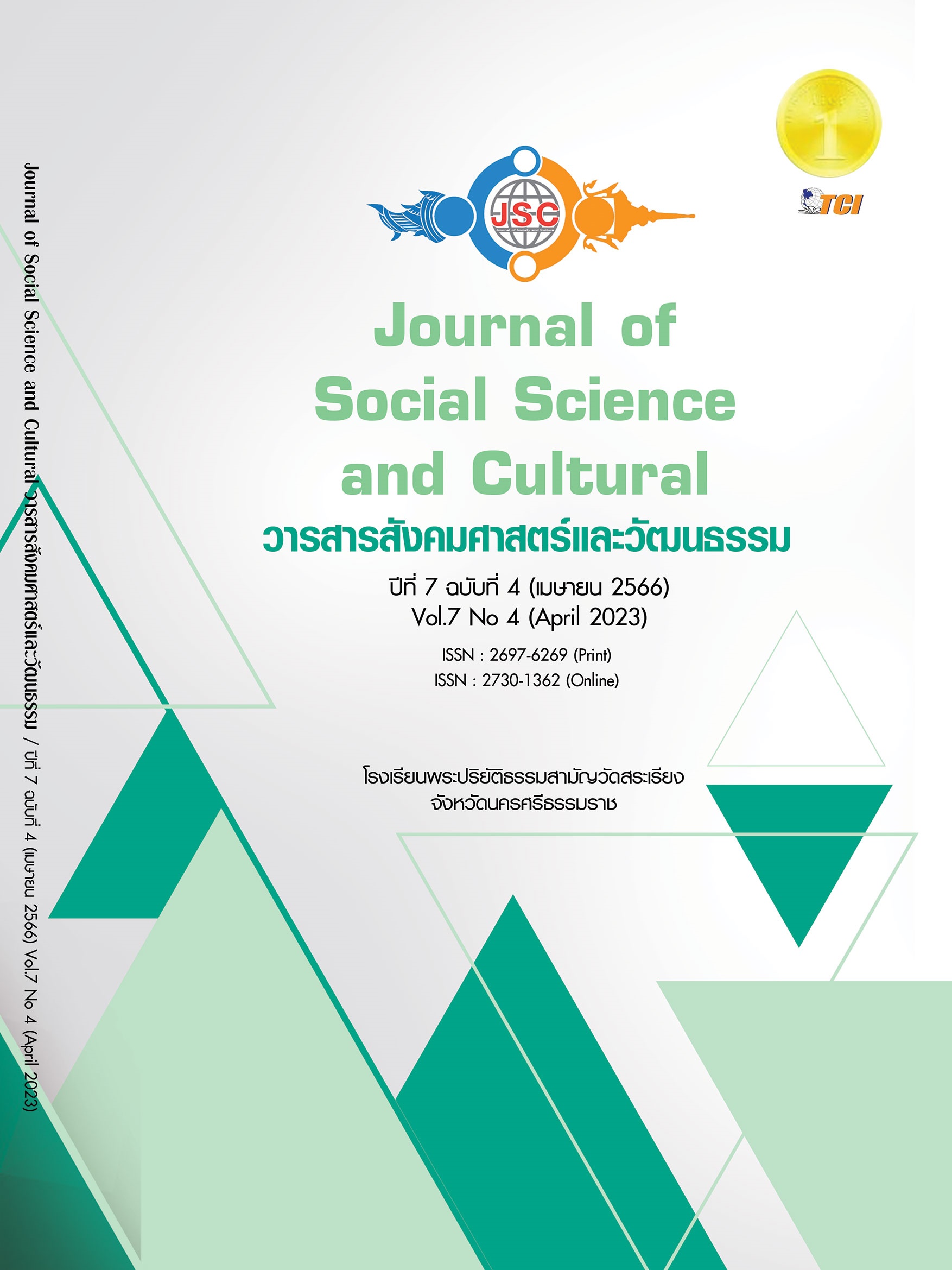GUIDELINES FOR EDUCATIONAL BUSINESS MARKET DEVELOPMENT IN RESPONSE TO CUSTOMER’S NEEDS IN DIGITAL ECONOMY
Main Article Content
Abstract
This research aimed 1) to study a guideline of development for educational business market in response to customer’s needs in the digital economic age, 2) to examine needs of consumers in the network of International Buddhist College in the digital economic age, and 3) to present new know-how of a guideline for educational business market in response to educational consumers in the digital economic age. This study in a mixed-method research. For quantitative research, data were collected from 115 samples, and the research instrument included a questionnaire. Data were analyzed with a package program, and statistics employed included mean and standard deviation. Meanwhile, the qualitative research was conducted with an in-depth interview with 30 key informants. The research instrument was an interview form, and data were analyzed descriptively. The findings revealed that 1. The study of educational customer’s and consumer’s needs in the digital economic age revealed that the courses should be developed every 2 or 3 years. 2. New know-how from the research is as follows 2.1 The needs of educational consumers and customers in the digital economic age, according to the respondents, were generally at high level ( =4.22.,S.D=0.35) 2.2 The guideline of development can be divided into 3 ways including 1) development of courses in every 2 or 3 years, with short-term courses of 1 year, 2 years or 3 years, 2) creation of a platform as the center of learning, and 3) the instruction modernization. 2.3 The presentation of new know-how is found that 1) The college provides 1-year, 2-year, 3-year curriculum. 2) A platform as the center of learning 3) The instruction is modernized
Article Details
References
ธนวรรณ เจริญนาน และคณะ. (2562). ผลการจัดกิจกรรมการเรียนรู้ออนไลน์ด้วย Google Classroom เรื่อง การสร้างสรรค์ชิ้นงานด้วยไมโครซอฟท์เพาเวอร์พ้อย สำหรับนักเรียนชั้นประถมศึกษาปีที่ 6. วารสารศึกษา มมร, 7(1), 381-396.
ประทิน ทับไทร. (2552). การสร้างบทเรียนคอมพิวเตอร์ มัลติมีเดียแบบมีปฏิสัมพันธ์ โดยใช้กิจกรรมกลุ่ม วิชาคณิตสาสตร์ เรื่องการคูณ. กรุงเทพมหานคร: มหาวิทยาลัยเทคโนโลยีพระจอมเกล้าธนบุรี.
มนัสนันท์ บุตรสอน และพรเทพ เสถียรนพเกา. (2558). การพัฒนาบทเรียนออนไลน์ กลุ่มสาระการเรียนรู้การงานอาชีพและเทคโนโลยี เรื่องการใช้โปรแกรมนำเสนอข้อมูลชั้นประถมศึกษาปีที่ 6. วารสารวิชาการหลักสูตรและการสอน มหาวิทยาลัยราชภัฏสกลนคร, 7(20), 25-34.
รัชนีกร สอนไชยา. (2548). “การศึกษาปัจจัยที่มีความสำคัญต่อการตัดสินใจเรียนกวดวิชาในเขตอำเภอสว่างแดนดินจังหวัดสกลนคร”. ใน วิทยานิพนธ์บริหารธุรกิจมหาบัณฑิต สาขาบริหารธุรกิจ. มหาวิทยาลัยมหาสารคาม.
วิทยาลัยพุทธศาสตร์นานาชาติ. (2563-2564). สถิติการรายงานจำนวนนิสิต (Report Current Students Learning). พระนครศรีอยุธยา: วิทยาลัยพุทธศาสตร์นานาชาติ.
สำนักงานคณะกรรมการการศึกษาแห่งชาติ. (2540). สรุปแผนพัฒนาการศึกษาแห่งชาติ ฉบับที่ 8, 2540-2544. กรุงเทพมหานคร: โรงพิมพ์คุรุสภาลาดพร้าว.
สิริพร อินทสนธิ์. (2563). โควิด - 19 : กับการเรียนการสอนออนไลน์ กรณีศึกษา รายวิชาการเขียนโปรแกรมเว็บ. วารสารวิทยาการจัดการปริทัศน์, 22(2), 203-214.
สุกัญญา แช่มช้อย. (2561). การบริหารสถานศึกษาในยุคดิจิทัล (SCHOOLMANAGEMENT IN DIGITALERA. กรุงเทพมหานคร: สำนักงานพิมพ์จุฬาลงกรณ์มหาวิทยาลัย.
อริญญา เถลิงศรี. (2565). Disruption: ทำลายล้างหรือสร้างโอกาส. เรียกใช้เมื่อ 29 พฤษภาคม 2565 จาก http://www.thaipublica,org
เอกชัย กี่สุขพันธ์. (2564). การบริหารสถานศึกษายุคดิจิทัล.(School Management in Digital Era) โครงการสานพลังประชารัฐ, 2564. เรียกใช้เมื่อ 3 ตุลาคม 2561 จาก http://www.trueplookpanya.com/knowledge/content/52232
เอื้อมพร หลินเจริญ. (2565). การวิเคราะห์และนำเสนอผลในงานวิจัยเชิงคุณภาพ. เรียกใช้เมื่อ 29 พฤษภาคม 2565 จาก http://www.edu.tsu.ac.th/major/eva/files/journal /DataAnalysis
Eric Schmidt and Jared Cohen. (2000). “The Digital Disruption”. Foreign Affairs, Nov/Dec 2010.International Technology Education Association. Standards for Technological Literacy: Content for the Study of Technology. Reston, VA: Author. Retrieved April 1, 2010, from http://www.iteawww.org/TAA/ PDFs/xstnd.pdf
Rothidsathan. (2016). Policy of Higher Education. Retrieved July 20, 2018, from http://www.moe. go.th/websm/2016/sep/385.ht2.jpg,p.10)


